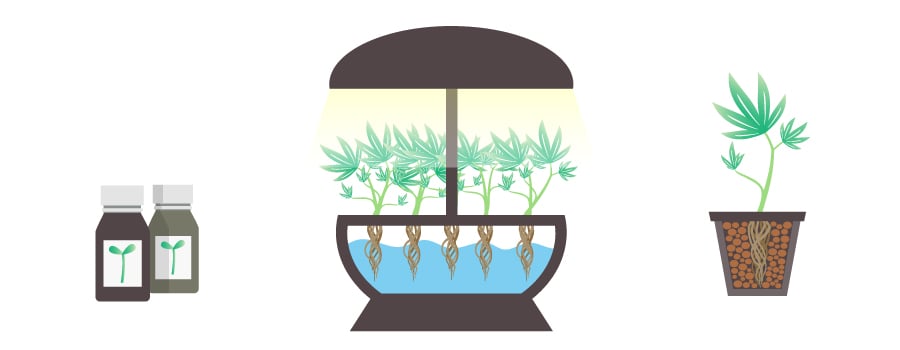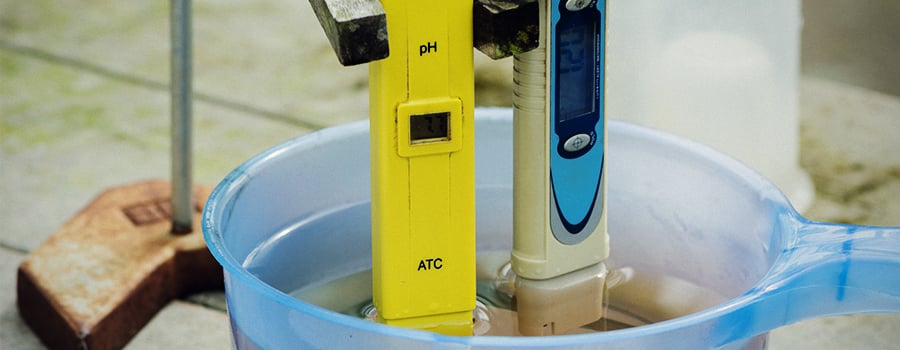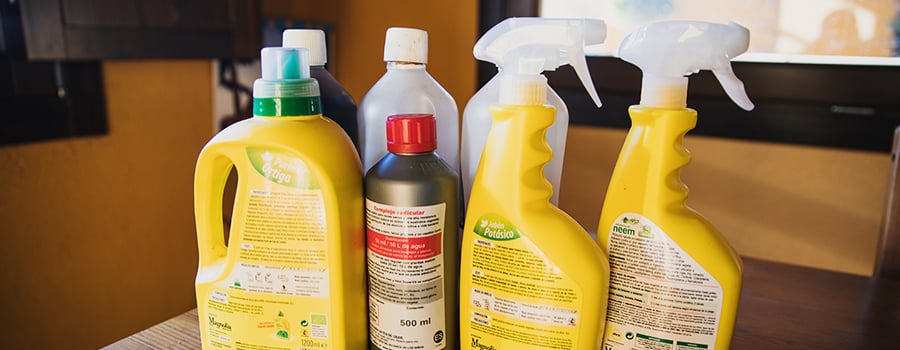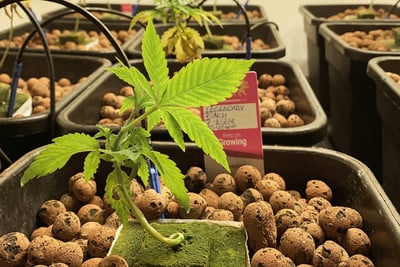.

A Guide On Cannabis Nutrients For Hydroponic Systems
Are you sure you're using the correct products for your hydroponic system? These will differ quite significantly from soil solutions. Make sure you know what to use, and in which quantities.
HYDROPONIC NUTRIENTS
When growing without soil, nutrients will be a crucial factor to consider when trying to achieve the best yields possible. With the right combination, you’ll be sure to get the best buds in terms of quantity and quality.
In hydroponic systems, the nutrient solution you choose will replace the micro and macronutrients that soil would normally provide. The advantage of hydroponic growing, however, is that you can replicate a soil medium without the unpredictability.
The first thing you should look for when purchasing nutrients is the ratio of three essential nutrients: nitrogen, phosphorus, and potassium (N-P-K). These are the macronutrients. They are called this because they are absorbed in the largest quantities by the plant.
Nitrogen is responsible for leaf growth and pigmentation. When there is a lack of nitrogen, older leaves turn yellow and soft. This can lead to a lethal condition if not fixed in a timely fashion. Phosphorus is what you’ll need for the proper development of stems, roots, and flowers. Because of this, during the flowering stage, your plants will require more phosphorus to produce bountiful yields. A phosphorus deficiency during the flowering stage can affect the quantity and quality of your buds drastically, so be careful. Potassium is of slightly lesser importance, but still contributes to the development of the buds, stems, and roots. It also ensures that proteins are synthesised.

CHOOSE THE RIGHT PRODUCTS
With so many brands and combinations of nutrients out there, which one is best for your grow? This is an important decision, but one you’ll be learning more and more about as you go. Only experience will help you assess the correct nutrients for your situation. It all depends on what you’re trying to achieve. But here are a few pointers to get you started.
Make sure that the bottles contain no organic matter; this will cause root problems and spur the formation of bacteria. The minerals you use should be chelated. This is when nutrients are covered by an organic molecule that is less sensitive to pH changes. This gives the plant a wider pH range in which it can properly absorb nutrients. And finally, the ideal NPK ratio will also be crucial.
NPK will be displayed on nutrient bottles as a ratio of 3 digits, each describing the percentage of the corresponding nutrient. The remaining percentage will be composed of micronutrients. The ratio of nutrients will change depending on the stage of growth. During the vegetative stage, your nitrogen value should be high, phosphorus should be medium-high, and your potassium, high too. When you move into flowering, make sure you decrease the nitrogen percentage. This should be kept low while the other two remain high.

MAKE SURE YOU HAVE THE RIGHT PH
There are some nutrients that are more easily absorbed by cannabis roots than others. Independently of the nutrient brand you choose, your plants can still face deficiencies if the pH is not correct.
Cannabis plants function improperly when the pH around the root zone moves into an undesirable range. This is why you need to be ready to act when you spot a deficiency. These tend to first show in the color of the leaves. When they turn yellow, either you’re lacking nutrients, or the plant isn’t able to absorb the essentials it needs.
In hydroponic systems, nutrients tend to be better absorbed when the pH around the root zone is between 5.5-6.5. But the ideal value you should aim for is 5.7. When looking to dial-in your pH, don’t necessarily trust a pH-stabilising solution. This kind of product still requires your constant attention. You’ll be better off flushing your system every now and then before purchasing pH-adjusting products.
COMPARING THESE TO SOIL
With hydroponic systems comes the obvious advantage of having more control over what the plant is absorbing. Having constant access to water and oxygen, you just have to control which nutrients you give your plants, and in what amounts. But using this more experimental system can also detract from some of the beauty of growing weed in a traditional way.
In a soil medium, manure can be added, which is a nutrient-rich material that will certainly improve the general health of your plant. This is something that a nutrient solution can’t replicate. Soil contains microbes that help turn organic material like guano, worm castings, etc. into usable nutrients for your plants. But in hydroponics, it is necessary to feed your plants the micro and macronutrients directly. Independently of the quality of your soil, you’ll always be needing extra supplements to obtain the best results. This is where hydroponic systems most differ from soil-based mediums.
Micronutrients like iron, copper, and magnesium are widely available in most soil mediums. Therefore, hydro solutions must contain more of these to compensate. Soil also contains more nitrogen. This is why hydro nutrients receive a hefty dose of nitrogen in the vegetative stage.

MAKING A DECISION
The debate between growing in soil vs using a hydroponic system continues to unfold. We assume you’ve already made the difficult choice and are ready to commit to your method. Once the commitment is established, you’ll have to make the decision of purchasing the best products for your situation. These will depend on personal preference, level of experience, and commitment to the grow operation. You might prefer nutrient solutions that require less attention, or you might be looking to control every single factor that can influence your yields.
These are all decisions you’ll have to make on your own, independently of what you read. No matter your level of experience, you’ll always run into problems that will likely require your intervention. This is how you learn. Just don’t let the death of a plant demotivate you or stop you from trying again. Hydroponic systems have the potential of yielding ridiculously potent, high-quality buds. The effort will pay off.
Good luck with your system and just remember that attention is key. As long as you’re confident in reading your plant’s signals, you shouldn’t worry. Have a good harvest.







































